Low FODMAP Diet Plans – limitations for Irritable Bowel Syndrome
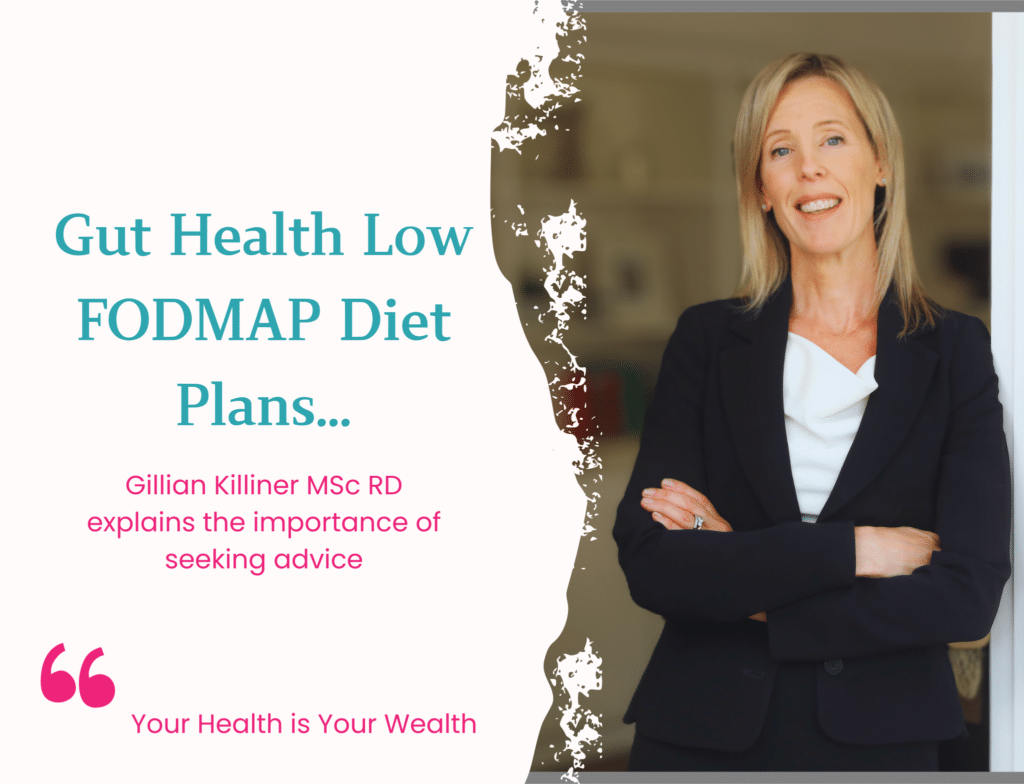
Relying solely on Low FODMAP meal plans from the internet may not be the panacea for all IBS sufferers
Traditional Foods for Easter and Their Meanings
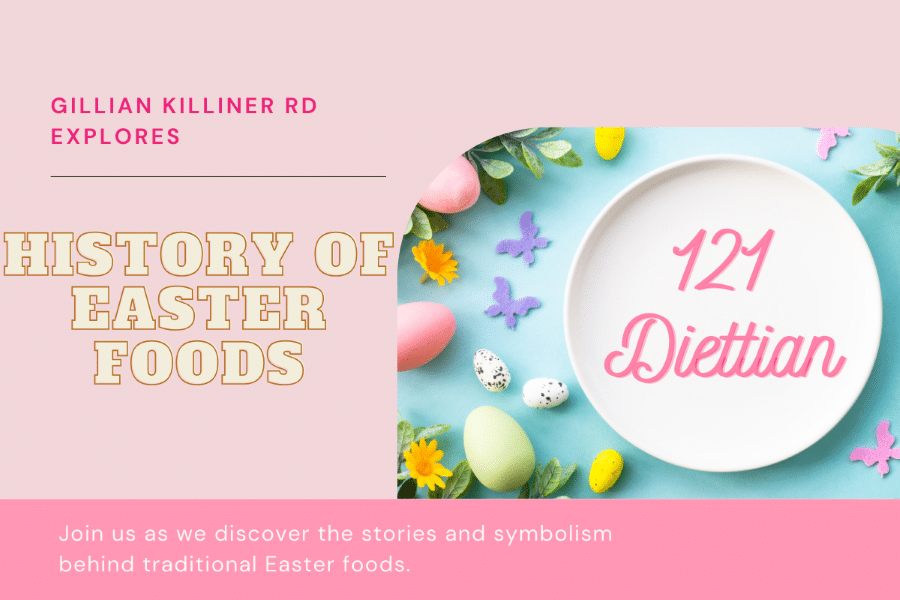
Traditional Foods for Easter and their meanings
How to Improve Gut Health in the UK
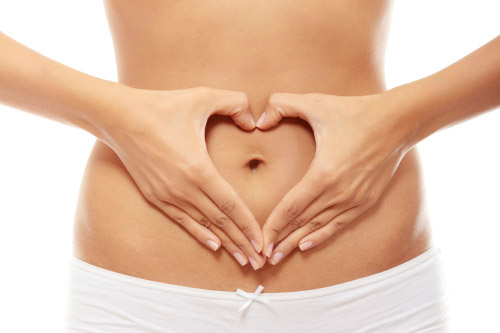
Understanding Gut Health Gut health is a very common concern that Gillian Killiner, our 121 gut specialist award winning Dietitian is asked to assess by Drs, Consultants, AHPs and patients who self-refer. She treats many every day, whether it be through online consultations or face-to-face in her clinic. If you’re not familiar with the concept of gut health, don’t worry! It’s a broad topic that encompasses various aspects related to different parts of the body, in addition to the gut itself and in the next few blogs we hope to cover these areas in more detail so you can get a better understanding. Gut Bacteria The gut microbiota, also known as gastrointestinal bacteria, is a diverse community of microorganisms that reside primarily in a part of the large bowel known as the colon, which is part of the digestive tract. This community includes bacteria, viruses, fungi, and other single-celled organisms. The gut microbiota plays a crucial role in various aspects of human health, and its composition can vary among individuals. A healthy gut not only strengthens our immune system but also supports the well-being of essential organs like the heart and brain. Moreover, it positively influences mood, fostering happiness and satisfaction. We know that when the gut is not balanced health is compromised at many levels. How are we able to assess our gut bacteria? Research into gut bacteria has been conducted since the invention of the microscope around 1665. Over the past 30 years, there has been a significant leap in this field, thanks to the sequencing of small molecules of life, including DNA and eventually RNA. What is Gut Health? The term “Gut health” is the umbrella term for various health conditions including : GERD Irritable bowel syndrome Hemorrhoids Coeliac disease Gallstones Constipation Diverticulitis Gastritis Ulcers Colorectal cancer Diarrhoea Gastrointestinal infections Liver disease Pancreatitis Esophageal cancer Gastroparesis Years of research and work in practice link these conditions to our gut bacteria whether as a direct cause, preventative or used as a treatment. In addition extensive research has also been linking the vital organs like brain, heart, liver, skin to our gut bacteria and how imbalances in the gut microbiota can lead to increased intestinal permeability or “leaky gut,” allowing harmful substances to enter the systemic circulation and burdening liver function. We know the health of our skin is closely linked to our gut health due to their shared immune system involvement. Research indicates that disruptions in the balance of intestinal flora may contribute to skin conditions like acne, eczema, psoriasis, rosacea, and dermatitis. The gut-brain axis is a bidirectional communication system between the brain and the GI tract. Treating the gut can directly assist mental health and well-being. Our Gut Health Programme is adapted to suit all gut health issues and more. Excellent Gut Health Ensuring excellent gut health at every age is crucial for overall wellness. An effective digestive system also promotes efficient nutrient digestion and absorption, which subsequently enhances sleep quality. Hence, giving priority to gut health is highly recommended. × Dismiss this alert. Dietitian’s Role in Managing Digestive Disorders A dietitian plays a crucial role in managing digestive disorders by providing tailored nutritional guidance to alleviate symptoms, promote digestive health, and improve overall well-being. Our 121 Gut Health Programme has helped thousands of people not only regain control of their bowel symptoms and health but also improve their sleep, mental clarity, weight and other health issues. How does 121 Dietitian work to improve Gut Health? At 121 Dietitian we work closely with other healthcare professionals to aid in the diagnosis and treatment of digestive disorders. We perform detailed individual assessments take a deep dive into the detail in our 60-minute consultation before writing up a detailed bespoke plan, supplement and lifestyle protocol. Before attending an appointment, our patients are required to log in to our online Portal to complete our background questionnaire and Food and Symptoms Diary. This part of the programme is completely free of charge and allows one of our specialist dietitians to direct you to select the correct programme. The programme includes a 30-minute review to ensure the programme has been successful and provide further nutritional advice and guidance as part of the programme requirements. Mairead AdamsGoogle Review Read More After having COVID at the end of 2022 I suddenly developed allergies to Milk products and intolerances to other foods. My Gastroenterologist recommended I see Gillian, who put me on her low Fodmap Programme at the end of September and I am now at the Reintroduction Stage. Since commencing the Programme, my bowel movements and general health have improved dramatically. I sleep better and a number of my aches and pains have gone. After having diarrhoea for 9 months, effectively, I can now go out and about without that worry of knowing if I will be close to a toilet and if I will be able to get there on time, to constantly carrying Immodium, just in case. The peace of mind this has given me is enormous, never mind that I now feel more like a ‘normal’ person. I still have to watch what I eat, especially in relation to my milk allergy, which may take a bit longer to ‘fix’, if it can be fixed. However, the change in me is amazing and I am extremely grateful to Gillian for her time, advice and patience in getting me to this point. Thank you Gillian. How a Specialist Dietitian can fix your Gut… Specialist gastrointestinal Dietitian Gillian Killiner brings her 26 years of dietetic experience to help each patient she sees. Her deep dive is extensive – here are just some of the areas covered…. Fibre Management We guide patients on appropriate fibre intake, considering the type and amount of fibre that can aid in digestion without causing discomfort. Food Allergies and Intolerances We identify and address food allergies or intolerances that may contribute to digestive issues.Recommend suitable alternatives to replace problematic foods. Hydration We emphasise the importance of adequate
Understanding Nutritional Labels: A Comprehensive Guide
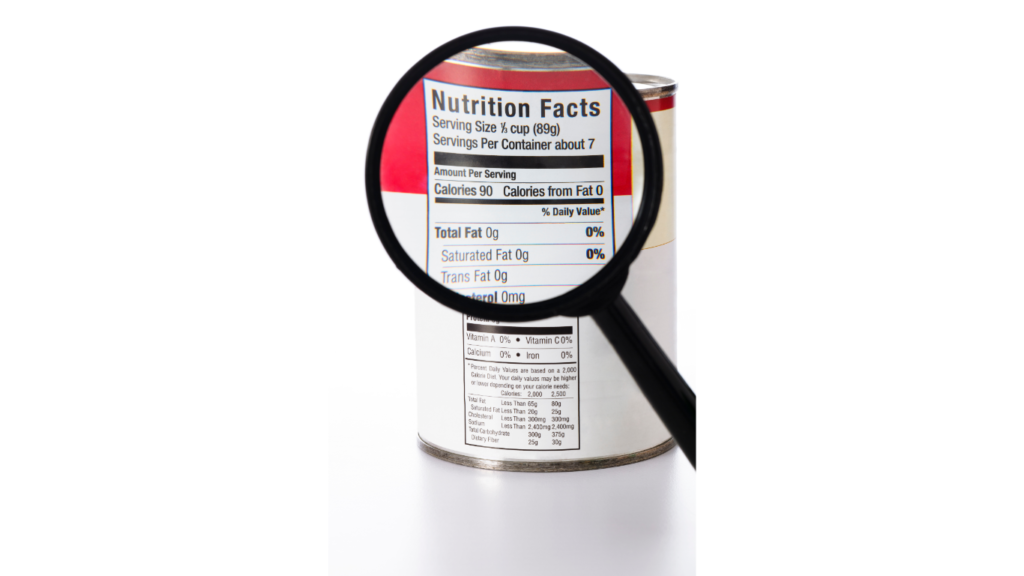
Nutritional labels on food products are often dense with information, often eligible in tiny writing and finding the right translation can take forever! Despite all these hurdles deciphering them correctly is vital for making informed dietary choices. Gillian Killiner Consultant Dietitian is an expert in this field and understands the significance of this task. In this blog Gillian provides a comprehensive guide on how to read nutritional labels correctly. In this detailed breakdown, she will walk you through the intricate details of nutritional labels, ensuring that you can make healthier choices with confidence. Decoding the Serving Size The first crucial aspect of any nutritional label is the serving size. This seemingly basic piece of information holds the key to understanding the rest of the label. It’s not just about how much you are eating but how much the manufacturer considers a standard serving. Keep an eye out for this information, often presented in both familiar units like cups or pieces and grams for precise measurements. A nice shop bought buttercream sponge is a great example! 490g in weight its pretty petite coming out of the box. If generous you may cut this into 4 big pieces to enjoy with others or if needing it to stretch maybe 6 pieces seem about right. However the nutritional recomendations per portion are calculated for 8 slices! and for 1/8th of the cake you are consuming 250kcals, 11.5g fat, 2.5g protein, 33g carbohydrates, 21g sugar, 0.7g fibre, 0.4g salt. You can see how easy it is to underestimate your intake if not checking the portion size! Cut into 4 generous portions and wow you have a little piece of cake with a lot of fat, sugar and energy! Calories: Understanding the Energy Content on a Nutritional Label Calories (kcals) provide your body with energy, but it’s important to note that not all calories are created equal. The caloric content on a nutritional label represents the energy you’ll get from one serving of the product and as mentioned above these can be deceiving! I actually am not a fan of kcal counting – it can be useful but only if you are completely new to all of this and only for a short few weeks to get you thinking. Kcal counting is not enjoyable can be very stressful and for some not actually address the food choices. You can eat a lot of rubbish food and be below your kcal requirements. Yes you will lose weight if you count and lower your intake and eat well – this has to be for life so it needs to suit you, taste good, fit with your lifestyle and your bank balance. Fats: The Good and the Bad Dive deeper into the fats section. Not all fats are detrimental to your health. Total Fat includes both unsaturated (good) and saturated (bad) fats. Look for products with low saturated fat content and higher unsaturated fats like monounsaturated and polyunsaturated fats. Additionally, keep an eye on Trans Fat, which should ideally be zero, as even small amounts can be harmful. Carbohydrates: The Body’s Primary Energy Source Carbohydrates are your body’s primary energy source, but not all carbohydrates are equal either. Dietary Fibre and Sugars are two components to watch out for. Fibre aids digestion and is beneficial for heart health, while excessive sugar intake can lead to various health issues. Opt for products high in fibre and low in added sugars for a healthier choice. Proteins: Building Blocks of Life Proteins are essential for building and repairing tissues. The Protein section tells you how much protein is in one serving. Whether you’re a fitness enthusiast or simply looking to maintain a balanced diet, an adequate protein intake is vital. Choose products with a higher protein content to support your body’s needs. The range is from 0.8g protein per kg/ideal weight/day to 2g protein per kg/ideal weight/day. Vitamins and Minerals: Nutrients for Overall Well-being Nutritional labels often list essential vitamins and minerals as a percentage of the Daily Value (% DV). These values indicate how much a nutrient in a serving of food contributes to a daily diet. Vitamin D, Calcium, Iron, and Potassium are nutrients commonly displayed. Pay attention to these values, especially if you have specific dietary requirements or deficiencies. Reading the Ingredient List on a Nutritional Label Apart from the nutritional facts, examining the Ingredient List is really important. As highlighted you can eat a lot of unhealthy fillers, artificial sweeteners and be in a kcal deficit. Is this good for you long term? In my near 30yrs in the world of nutrition the answer is a big NO. Ingredients are listed in descending order by weight. If the first few ingredients include unhealthy elements like high-fructose corn syrup or hydrogenated oils, you might want to reconsider your choice. Opt for products with easily recognizable, natural ingredients. Allergens and Special Dietary Needs Manufacturers are obligated to highlight common allergens like nuts, soy, or gluten. If you have allergies or follow a specific diet (such as gluten-free or vegan), thoroughly check this section to ensure the product aligns with your dietary requirements. Items eg: dried beans, pulses, herbs, spices, cereals, deli, fresh produce can be difficult to get full disclosure on the allergy risk. Sticking to the food product guide in your allergy official membership will be helpful or contact the manufacturer of the product if you really want to eat something and you feel it may be bad labelling rather than a product issue. Conclusion: Empowering Your Food Choices In conclusion, understanding how to read nutritional labels empowers you to make healthier food choices. By deciphering serving sizes, grasping the differences in fats and carbohydrates, recognizing the importance of proteins, and being aware of essential vitamins and minerals, you can navigate the complex world of nutrition with a little more confidence. Labels are regularly altered as ingredients change so do keep an eye on them! A well-informed consumer is a healthier consumer. If you want to book
Intuitive Eating – myth busting
Myth Busting Intuitive Eating One of the biggest misconceptions is about intuitive eating. People fear that if they are not following a strict diet then they can’t lose weight, which is thankfully far from the truth… Intuitive eating = eating perfectly all the time This is not the case. So if this is you, don’t fear, read on and I explain this in more detail. There are so many different factors involved in intuitive eating it is not about eating perfectly 100% of the time, this is just not required. What is intuitive eating? In a nutshell -Intuitive eating is making food choices at each meal and snack that are not from a controlling plan but are focused on natural unprocessed sources that suit: your body composition your background your cooking skills your time limits your wallet your health and much more How is intuitive eating different from a diet? Intuitive eating is thankfully very different from traditional dieting. In traditional dieting, rules and numbers are created based on crude figures like your weight and height which are frequently inaccurate. These numbers are to be met each day strictly. The type, quality of food and lifestyle are not factored in and these are important. For example, you can eat a ton of sugar-free and fat-free foods and drinks to meet low kcals or eat a packet of processed nitrate-full meats to meet your protein. These pro-inflammatory options impact negatively on gut bacteria, hormones, insulin release and appetite signalling and keep you stuck in a vicious circle. Intuitive eating is, fortunately, the opposite where you learn to enjoy food and understand what your body needs micronutrients included. No number crunching is involved. Fortunately, there are no foods off-limits but it requires a different mindset and an understanding of how your diet fuels you long-term and keeps you happy. SO -NO QUICK NASTY FIXES! YAH! Can you eat intuitively and lose weight? Yes, Yes, Yes and most importantly intuitive eating is adaptable for life and all the variety that comes with it. Intuitive eating allows you to go on holiday, go out with friends, enjoy parties and BBQs, with no guilt attached selecting the right foods and moving on. How do people lose weight through intuitive eating? Instead of weighing your food, counting calories, stressing you are not meeting macros, and feeling miserable in the process, you eat according to your day and what makes you feel fueled and happy. That doesn’t mean junk, takeaways, cookies and buns. It is finding the foods that will assist your health both physically and mentally that you will enjoy. Feeding and fueling the correct gut bacteria reduces inflammation and most importantly fixes the stress and guilt around food. What does intuitive eating look like? A popular question and one again that needs to be suited to you as an individual taking into account: Your age, your health status, your sex, your weight, your height, your ethnicity, your cooking skills, your time, your activity, your stress, your sleep, your fluids and possibly more. The bottom line all needs to be factored into this. Simple options include regular meals made from suitable: natural good quality proteins varied and colourful vegetables regular fruits in suitable amounts – not made into smoothies healthy natural fats high fibre carbohydrates Get these in at each meal and you are on the right path. Is intuitive eating healthy? Studies have found that intuitive eating has positive nutritional outcomes compared to restrictive dieting plans. With letting go of strict control there is instantly less stress, better sleep, and an understanding of real hunger and appetite. Since intuitive eating does not come with specific diet plans, intuitive eaters learn to consume a wide variety of foods, are more likely to get the benefits of well-balanced nutrition and most importantly stick with it long term no yo-yo dieting. Is Intuitive eating dangerous? NO intuitive eating is not dangerous but you must trust your ability to eat the best choices when you feel hungry and stop when you have had sufficient. Undereating or overeating in any diet will be dangerous. Intuitive eating benefits There are many benefits: insulin sensitivity, happy mood, weight loss, not feeling you are on a diet, and consuming not only macros but micronutrients too! My intuitive programmes keeps it real as here at 121 Dietitian we prefer the 80-20 rule where you have a little bit of what you like at a time in the day that works for you. This allows you to feel less isolated and keeps you on track for life. A WIN-WIN! Hunger is Affected by What You Eat Definitely, if you get the balance wrong and eat what you like from the wrong choices then hunger will not be addressed. Refined carbs and processed foods with lots of sugar messes up hunger cues so you will remain tempted by the foods that derail you and keeps you feeling miserable. I can’t count the number of times that I have patients call to tell me they no longer crave the rubbish they were addicted to. Honestly it’s the best feeling ever. How do I know if I’m hungry with intuitive eating? Headaches, tiredness, feeling short-tempered, thinking about food, lightheadedness, or feeling sick could all be signs of hunger – these should not be your ques to eat, it is far too late and a concern if these are your triggers to eat. You are more likely to reach for the wrong stuff. Keeping good blood sugar control from slow and low energy-releasing foods is the only way to assist this. Can you count calories and eat intuitively? Yes, you can and many people do. I am not against this option at the beginning if you need this to get it right and you are coming from strict counting. It can be daunting to chuck this all in so best to ease out while intuitive eating takes control! Kcal counting does take time and dedication and is
Essential kitchen utensils for stress-free cooking
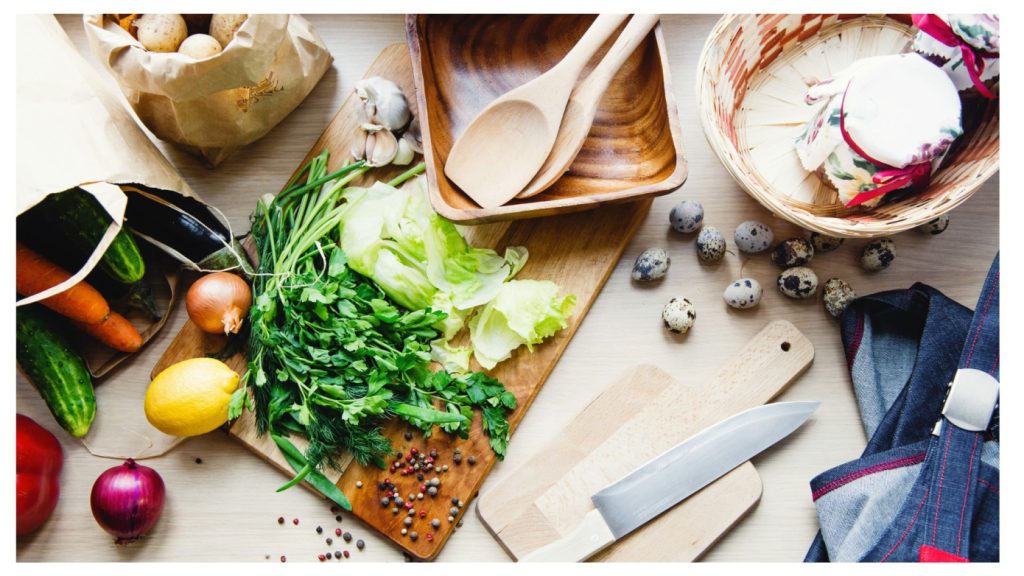
Whether your aim is to get healthy by ditching the processed meals in favour of home cooked goodness. Or you simply want to get more adventurous in the kitchen. The best place to start is with the right essential kitchen utensils. It has been said that ‘a poor workman blames his tools’. So the easiest way to ensure your cooking process is as a stress-free and fast as possible is to ensure you are armed with the correct utensils. Here, we share our essential kitchen utensils that Gillian Killiner has personally used for several years and can promise will help ensure your cooking experience is a breeze. The aim to help get you healthier in the process! Measure it out Most recipes will include measurements for ingredients either in grams and ounces or millilitres and pints, not to mention tablespoons, teaspoon and dessertspoons, So a good place to start is with all the right measuring tools. I find the following set mega helpful with measuring oils, coffee, stock powder. Owning a set of weighing scales is a great start but for easy reading and accurate reading of wet and dry ingredients. Our favourite choice would be hassle-free electronic scales. You can add ingredients to the bowl, zero the scale and add again – super handy. You’ll also need a measuring jug or jugs. Choose with both the metric and imperial markings. measuring spoons are highly practical especially when using recipes from around the world. Essential kitchen utensils to chop With fresh cooking comes prep. This involves chopping so you’ll need good surfaces to chop food on, while keeping your kitchen surfaces scratch free. Chopping boards are necessary for this. Ideally, you should have separate boards to avoid cross-contamination between raw meat, poultry, seafood, and eggs. Thankfully, chopping boards range in price many are relatively cheap but if you invest in a good set they will last years. Graters & drainers A cheese grater isn’t just for grating cheese! It comes in so handy in the kitchen and can be used for grating things like garlic, ginger, fruit, vegetables, cheeses and even chocolate! You’ll also need a really good, sturdy colander, which can be used for draining foods such as wholemeal rice and pasta. as well as rinsing vegetables. The essential kitchen utensils -smaller tools It can be rather daunting when starting off as cooking requires many skills such as chopping, slicing, stirring, whisking and peeling. While none of these are difficult to do, having the correct tools like sharp knives are essential for speed and achieving the end result you desire. Again, each of these are readily available in the shops or online. They range from low cost to very expensive. Start off with a few and build your collection as your experience grows. This furi knife block was a personal purchase which I have been using for the past few years. They really do assist in all preping tasks. If you want to go BIG with an essential kitchen utensil! Not everyone likes being in the kitchen for hours. Time saving gadgets are a great way to cut down some of the work. I absolutely love my magimix and it was a personal purchase for me after many years of really, really wanting one. I have had it now for 10 years and it works like a dream when making soups, sauces, cakes etc. Storage saviours Finally you’ll need somewhere to store all your home cooked goods. This will keep them fresh as long as possible. Alternatively freeze so you can enjoy your hard work again at speed. Healthy eating requires a little planning so these boxes are a great way of storing any ingredients you’ve prepared in advance. Storage boxes are available in a range of sizes and styles so again, start with a few and add to your collection if you need to, a handy option is to clean out tubs that you buy food in and use these again – no cost and very effective. I do again have a set of storage containers and personally bought many years ago after I realised the risks of plastics, especially when heated or storing fats. They have been used over and over each day by all my family and far more durable than I imagined they would be. Definitely a little investment and making time to cook is the cornerstone to healthy eating. As experts in Diet and Nutrition for decades we know that pouring your money into quick fixes are not the answer – you need enjoyable nutrient rich meals and snacks lifelong. Our nutritional programmes are designed to help you. On-the-go While it isn’t an essential kitchen utensil, this is definitely one thing we’d recommend… A glass drinking bottle. These are great for helping you drink more water on-the-go. They are also useful for things like shakes, smoothies and even tea. We’d be lost without ours! The reason for using glass? Glass eliminates the leaching of chemicals you get from plastic bottles. Thus reducing health concerns and also ensures the water tastes great. Reusable glass bottles assists the environment and saves you a ton of money too. We would love to hear your top utensil choices and why. Visit our facebook page to share your thoughts and ideas. If you need help with putting together healthy ingredients then why not book an appointment here today. Need a recipe to get started? Check out our naughty but nice for special occasions, gluten free dairy free chocolate cake recipe here. If you are unsure of how to change your eating habits. Or need help optimising the foods you eat please do contact us. We would love to help you or your family and friends with any nutrition related queries big or small. In the meantime do please check out more health and well-being choices specially selected for you on our 121Dietitian Shop If you have enjoyed this blog we would love you to share this with your family and